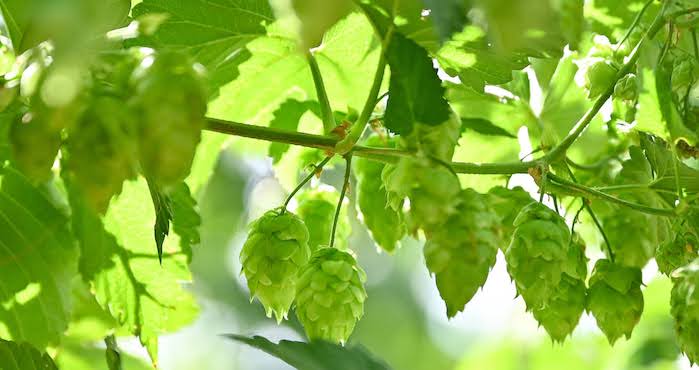Hop Science Newsletter (June 2019)
In this issue: hop creep, and the aroma potential of the Huell Melon hop variety.

MORE ABOUT THE HOP CREEP
By now this phenomenon is known by many craft brewers. Dry hopping leads to over attenuation, but why? Overattenuation of dry-hopped cask ales was already reported by Dr. Horace Brown over 100 years ago, citing that “dry-hopping induces an earlier and more persistent cask fermentation in beer”. However, the small percentage of endogenous sugars in hops was reported to be insufficient for the extent of refermentation. Already back then, observations led researchers to conclude that hops contain a “diastase” able to break down residual, nonfermentable beer dextrins as seen by the production of reducing sugars in dry-hopped beers. Now 100 years later the team of Prof Shellhammer invested time and resources to demystify the hop creep in detail. They found that the total activity of α- and ß-amylase in hops is well below that of malted barley, but within the range of plant amylase activities reported in literature. To investigate factors that may influence the rate and extent of refermentation as a result of dry-hopping with Cascade hops, a set of conditions were explored including dry-hopping rate, temperature, duration, and separately, exposure time to hop material. Glucose concentrations correlated with hop dosing amounts and rose steadily throughout the 15 days of dry-hopping. There was no change in the carbohydrate composition of beer dry-hopped with hops that had been autoclaved at 121 °C. The results suggest the effect of enzyme activity was dependent upon exposure of beer to hop material and that shorter dry-hopping time with hop removal, for example through filtration, may significantly reduce continued enzyme activity in finished. In this regard, the collaboration of hops and yeast can turn into a diabolic pack!¹
ABOUT THE AROMA POTENTIAL OF THE HOP VARIETY HUELL MELON
If you are not familiar with the hop variety Huell Melon, the name easily raises the expectation of some melon flavours in the variety and possibly also in a dry or late hopped beer. I personally find that a strong sweet and strawberry flavour is very characteristic and pretty unique for this variety. The team of Prof. Steinhaus extensively worked with this variety to find the most dominant odor-active compounds in this variety. They produced bottom-fermented and top-fermented beers, both either late or dry hopped with Huell Melon hops, and respective reference beers without late or dry hopping. Those beers were subjected to a comparative odorant screening by aroma extract dilution analyses. On the basis of differences in the FD factors, 14 odorants were identified as hop-derived. Among them were ethyl 2-methylpropanoate, methyl 2-methylbutanoate, ethyl 2-methylbutanoate, propyl 2-methylbutanoate, myrcene, linalool, and geraniol. Differences between late hopped, dry hopped, and reference beers were substantiated by quantitation. Results showed minimal transfer of myrcene from hops into beer. Moderate transfer was observed for propyl 2-methylbutanoate, geraniol, and linalool. Processinduced changes of ethyl 2-methylpropanoate, ethyl 2-methylbutanoate, and methyl 2-methylbutanoate were beyond a direct transfer from hops into beer, suggesting a formation from the corresponding hop-derived carboxylic acids by yeast. Spiking experiments revealed that linalool
and propyl 2-methylbutanoate contributed particularly to the characteristic aroma of beers flavored with Huell Melon hops. Again this shows two things, myrcene does not really matter and it’s the combination of known aroma compounds that determine the characteristic flavour of a hop variety.²
EVENTS:
While the hops are nicely growing and summer holiday is fixed, here are some dates to consider after the holidays:
Hops Academy: Yakima US in English, Yakima, WA, 10/11th of September
Hops Academy: Sprichst Du Hopfisch in German, Hallertau, 18/19th of September, https://www.barthhaasgroup.com/de/hops-academy#termine
Hop Flavourist Course – Level 1, German/English, Nuremberg 26/27th of November, https://www.barthhaasgroup.com/de/hopsacademy#termine
REFERENCES
